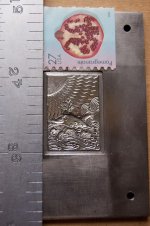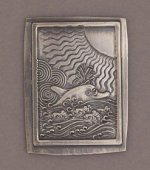kpotter
Diamond
- Joined
- Apr 30, 2001
- Location
- tucson arizona usa
I make dies for the jewelry industry, and we have started recreating alot of the antique styles of jewelry from the early 1900s. I have been trying to find as much info as we can on how these dies were made. There is very little as far as books on the subject I think it was very secreative. I have been traveling around meeting people and buying up as many original hubs as we can. We have over 40 thousand master hubs right now. I have talked with many very old guys who made dies but even when someone is in their 90s they were still to not around when many of the die we have were made. I would ask them how they did it back then and they would describe a method and I would ask if they had ever actually made a die using that method and it was always no. A month ago I found a person who has made thousands of dies using old methods. The problem was he was 88 years old and he lives in Gaudlahra mexico and speaks no english. I really wanted to know how this stuff was done so we flew him and his son out and he spent a week teaching me. I learned more in the first day than I had in several years of trial and error. He learned in a die shop that made dies for the silver industry. The old ways hung around alot longer in mexico. He did ask why I didnt have an edm and a cnc machine. He knew how to run those and told me I needed to get with the times. I chased every living die maker I could find in the US but got pretty much nowhere. The work was so specialized here in the US that no one had a whole picture of how everything worked. We did everything from the model to the master tool steel hub. I almost went to mexico to work in his shop but he said it would be better for him to show me on my equipment. Thought I would share this here since I cant think of too many people who would find this interesting.






